Results 81 to 90 of 91
-
02-03-2010, 02:31 PM #81Electric Razor Aficionado

- Join Date
- Apr 2006
- Posts
- 3,396
Thanked: 346
My Livi/Takeda's are definitely not tamahagane. Partly because they don't look or shave like my western-style tamahagane razor, but mainly because I found an old post by Lynn where he's introducing the Livi/Takeda line that says they're made from some "Aogami super steel" (I know Hitachi makes Aogami, not sure who else over there does) ...
Last edited by mparker762; 02-03-2010 at 02:40 PM.
-
02-03-2010, 07:43 PM #82

Stolen from:
Blade Steels | Japan Blades
◆White Steel (Shirogami)
This is refined carbon steel that does not contain any ingredients and can be used for making high-grade Hocho (Japanese kitchen knives), hatchets, axes, sickles and chisels.
◆Blue Steel (Aogami)
This is made by adding chromium and tungsten to Shirogami (White Steel) that makes the material more durable and provides corrosion resistance and mostly used for making high-grade Hocho (kitchen knives) and outdoor knives.
◆Super Blue Steel (Aogami Super)
This is the highest grade steel in their product line that contains high percentage of carbon, chrome to increease hardness, improviding edge retention and corrosion resistance.
===
And Tenmi Jyuraku Series Japanese Knife,Japanese Kitchen Knife,Japanese Cutlery,Japanese Chef's Knives.Com
adds some detail:
Hitachi Aogami Super (AS Carbon steel), an ultimate Hagane refined from Yasugi sand-rons. High carbon steel (1.40 – 1.50) with Chromium (0.30 – 0.50) and Tungsten (2.00 – 2.50) added for extra durability and longer edge retention.
-
02-03-2010, 08:10 PM #83
 damascus and why it's so expsensive
damascus and why it's so expsensive
To truly understand and appreciate why damascus blades are so expensive, you must truly understand what damascus is, and how it is made.
For that I would refer you to investigate the people who perfected the process of producting damascus... Japanese swordsmiths. Without damascus steel, the legendary status of the samurai wouldn't have exhisted.
There are plenty of great videos on youtube. Just search for "how samurai swords are made" and try and pick one of the 10 minute long videos. They will explain in detail how the steel is made.
The two key components in making good Damascus are the carbon content, and the differential tempering (in swords at least)
Too much carbon will make the blade brittle, not enough and it will be too soft to cut.
The tempering also aids in this process. The edge of the blade is heated and cooled more rapidly than the spine. this allows the edge to remain stiff for cutting, and the spine to be flexible for shock obsubtion.
Sorry for the long response, I'm just a Samurai/ Damascus nut. Hope this helped
-
10-28-2011, 09:07 PM #84

Hi everyone, I know this is an old thread, but I am hoping many who contributed are still active members and can through some light on a razor that sold recently.
I wanted to get it but a) didn´t have that kind of funding and b) knew less that I now know about Damascus.
Could someone (especially Mike) please advise what type of damascus is in this razor?
I am guessing that it is "pool or eye pattern" style Damascus steel and not something infinitely better that I should have sold my left kidney for...........
Geo Wostenholm & Sons Doubly Carbonized IXL Razor Registered 10th Sept 1850:-

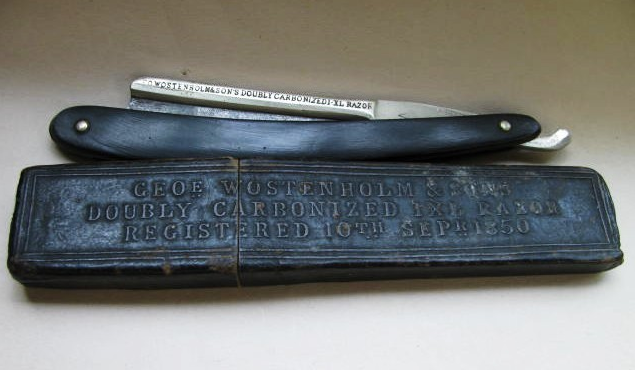

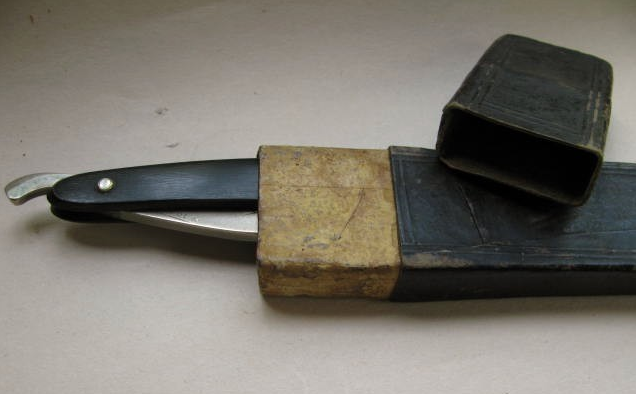
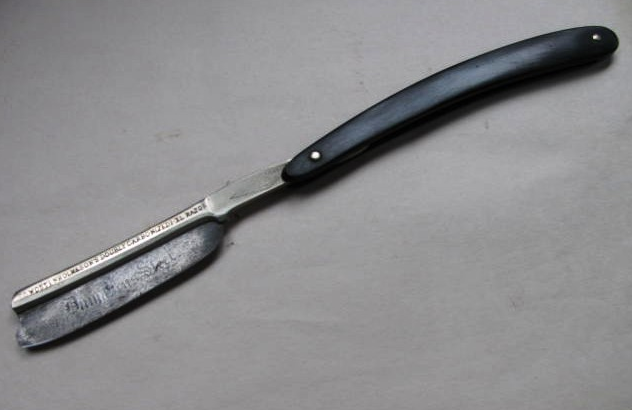
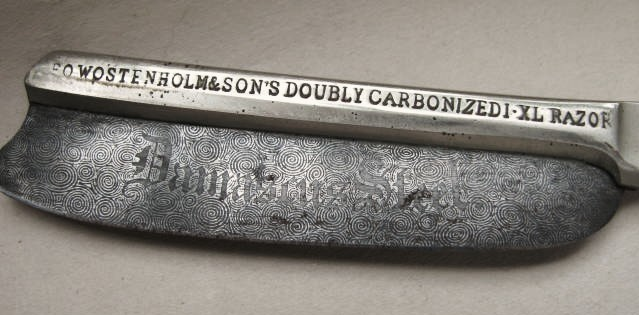
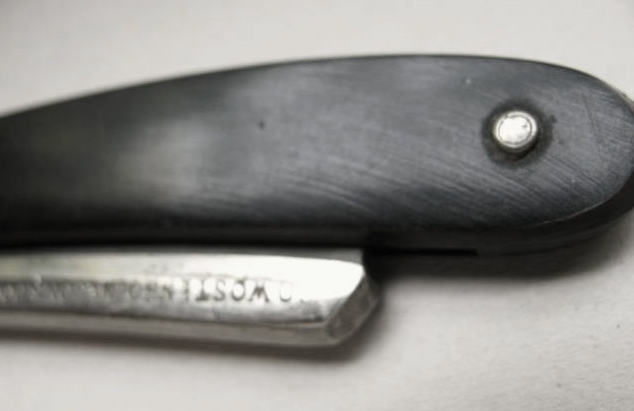
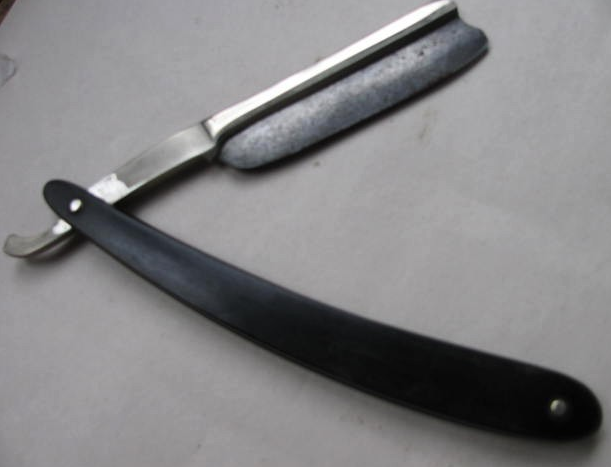
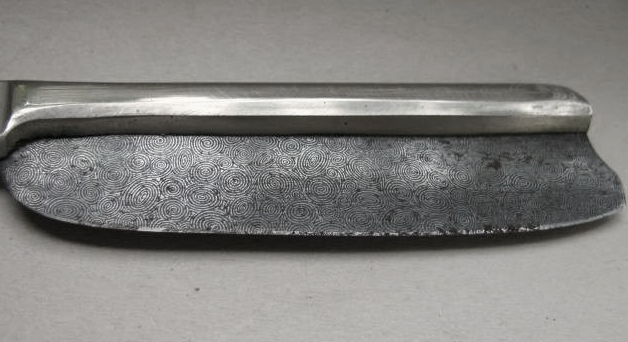
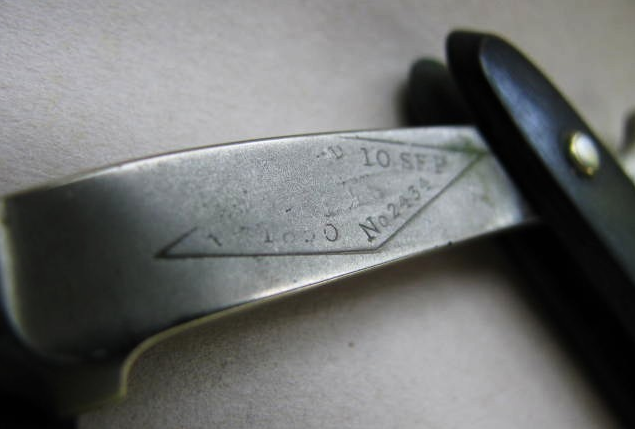
Last edited by JimmyHAD; 10-28-2011 at 09:17 PM. Reason: remove duplicate photos
-
10-29-2011, 02:44 AM #85"My words are of iron..."


- Join Date
- Oct 2006
- Posts
- 1,898
Thanked: 995
Bonitomio,
I hope I do not create excess pain, but this is not a laminated blade. What you see is an etched superficial pattern. It is a fine old blade, without doubt.“Nothing discloses real character like the use of power. Most people can bear adversity. But if you wish to know what a man really is, give him power.” R.G.Ingersoll
-
10-29-2011, 05:25 AM #86
-
10-30-2011, 11:57 AM #87

I've read a paper (can't remember the author) on the very subject of Damascus steel and its edge keeping tendencies. From the article, the jest of it was that Dmamscus steel did hold an edge better. This was due to the production of the metal and the carbon in it taking the form of carbon nanotubes that were filled with a slightly harder material and the overall structure was called "cementite" if my memory serves. Basically, the Indians (of the country India) who were making the steel for import to Damscus inadvertently found a way (unknown to them) to forge the steel that had something close to the modern day kevlar in it but it was a tube filled with a compound almost like plaster that came from the wood itself that was usued for the carbon. I wish I had the article but alas, I do not.
Laugh at What You Can...Live with the Rest...
Rich
-
10-30-2011, 12:22 PM #88

I have the Norton 200/1000 and 4000/8000 hones and a "barber's home" (don't know thagrit) for my vintage str8s but for my new Dovo, I still have the certificate from SRD for a sharpening and I'll probably keep sending it back and pay for it to be honed. I'll work on the pickup truck (vintage) str8s myself but my Cadillac (Dovo) will probably always go to the mechanic in order to continually assess my honing ability...
Laugh at What You Can...Live with the Rest...
Rich
-
10-30-2011, 01:10 PM #89"My words are of iron..."


- Join Date
- Oct 2006
- Posts
- 1,898
Thanked: 995
Here is a citation of the original article:
Nature 444, 286 (16 November 2006) | doi:10.1038/444286a; Received 24 July 2006; Accepted 25 October 2006; Published online 15 November 2006
Materials: Carbon nanotubes in an ancient Damascus sabre
M. Reibold1,2, P. Paufler1, A. A. Levin1, W. Kochmann1, N. Pätzke1 & D. C. Meyer1
Top of page
The steel of Damascus blades, which were first encountered by the Crusaders when fighting against Muslims, had features not found in European steels — a characteristic wavy banding pattern known as damask, extraordinary mechanical properties, and an exceptionally sharp cutting edge. Here we use high-resolution transmission electron microscopy to examine a sample of Damascus sabre steel from the seventeenth century and find that it contains carbon nanotubes as well as cementite nanowires. This microstructure may offer insight into the beautiful banding pattern of the ultrahigh-carbon steel created from an ancient recipe that was lost long ago.
Top of page
Institut fur Strukturphysik, Technische Universität Dresden, 01062 Dresden, Germany
Triebenberg Laboratory, Technische Universität Dresden, 01062 Dresden, Germany
Krüllsstrasse 4b, 06766 Wolfen, Germany
These folks were originally looking for cementite wires and found the nanotubes when they dissolved away the steel matrix with hydrochloric acid. John Verhoeven, another notable wootz researcher, has some questions about this because it is possible for cementite to form rods which would look like tubes. Another criticism is the use of the tunneling electron microscope which could form tubes and/or contaminate the sample. There wasn't any discussion of sharpness or edge holding. The end results remain under discussion even by the metallurgists that found this phenomena.
Manufacturing wootz requires a crucible heated to above the melting temperature of iron. Any carbon source, most likely charcoal, only amounts to 1.4% (or so) of the total melt with slight variation. No wood is going to be left over. That was long gone when the collier made the charcoal.
While technically cementite is defined by some chemists as a ceramic, it's an iron carbide that is only viewed well at the microscopic level. I can't recall any articles discussing plasters. I dunno where that came from unless you read about a recipe for making wootz that included something like plaster (calcium carbonate) to be consumed as a flux or slag reformer. That could be true. I use similar compounds when smelting steel. That would have been consumed during the melt and not included in the button of steel.
Wootz does have some cutting efficiency that is better than some modern steels but that is due to the increased number of carbides in the pearlite matrix that holds them. This was true up through the early nineties based on the CATRAL studies in the UK. The new crucible particle metals (CPM) are showing some cutting efficiency and abrasion resistance that is as good as or better than classic wootz. The nanotube article does not mention any cutting tests.
And lastly true, the ancient metallurgists did some amazing things without knowing what we know today. In this modern internet era, it's entirely too possible for a slurry of information to develop that's made up of bits and pieces that do not give a wholly accurate picture. This has been well discussed here on SRP for something as simple as the advertising claims where metallurgical concepts (Manganese, Magnetic, Damascus, and etc.) appear on razors that have nothing to do with the likely contents of the steels used. Modern blade makers are not far removed from those temptations too.
I only want to help keep the myth and magic from mixing too well so we can't separate the things we now know from the things they didn't know then. “Nothing discloses real character like the use of power. Most people can bear adversity. But if you wish to know what a man really is, give him power.” R.G.Ingersoll
“Nothing discloses real character like the use of power. Most people can bear adversity. But if you wish to know what a man really is, give him power.” R.G.Ingersoll
-
10-30-2011, 01:15 PM #90


 12Likes
12Likes LinkBack URL
LinkBack URL About LinkBacks
About LinkBacks







 Reply With Quote
Reply With Quote

 :
:
